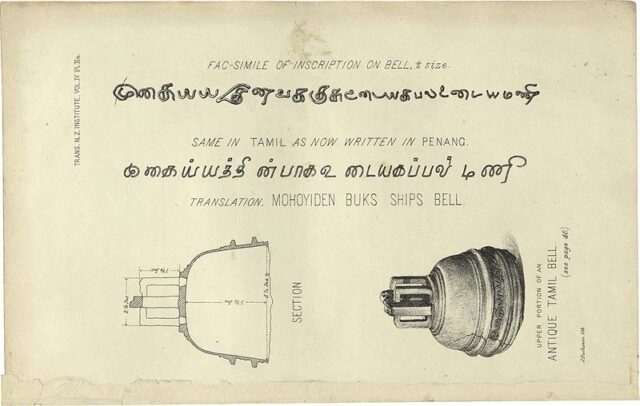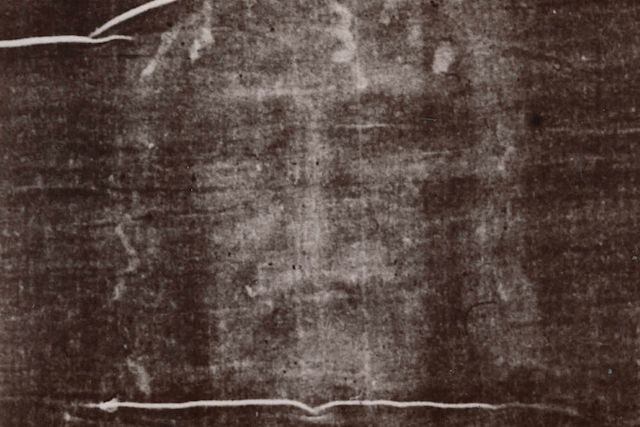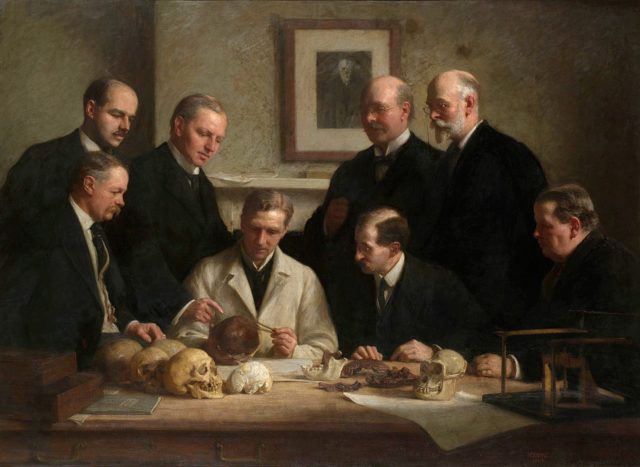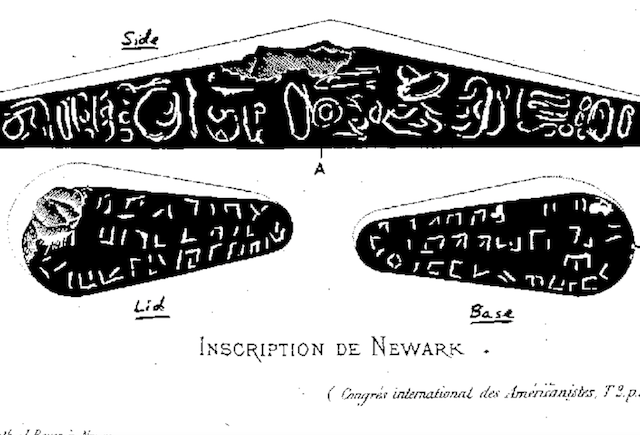Out of place artifacts, abbreviated as OOPARTS, are a popular source of evidence among those who support theories of ancient alien visitation, creationists, paranormalists, and other forms of pseudoscience and fringe science. What are they? They may indicate technological advances centuries before such capabilities were known to exist. Or they may provide “proof” of human existence before humanity existed. Or they may provide evidence of human emigration centuries earlier than previously thought.
An important part of OOPART is its ability to confound experts who seem unable to explain the facts before their eyes. According to Law on Libraries Here are 10 such OOPARTs that have been debunked by mainstream science, although they still have their supporters.
10. Tamil bell

In 1836, a Christian missionary to New Zealand named William Colenso discovered Maori women cooking potatoes in a bronze vessel, which he recognized as a damaged bell. Further research by Colenso, who was also a renowned botanist and explorer, revealed that the bell was made of bronze and had an inscription in ancient Tamil, using characters that had long since fallen out of use. The inscription identified the Maori pot as a ship's bell.
Since its discovery by Colenso, there have been many theories about how the Tamil bell arrived in New Zealand from Asia when no previous evidence of Tamil-Maori contact has been found, nor has any since. The bell is OOPART because of its inscription linking it to a Tamil ship, although this does not mean that the Tamils had contact with the Maori in the centuries before its discovery. The region's waters were plied by numerous vessels, including Portuguese, French, English and Spanish. Pirates also roamed the area. Thus, it is available any number of plausible explanations presence of the bell.
It may have been recovered from an abandoned ship that washed ashore in New Zealand. It may have been taken as a prize by sailors from one ship or another and sold to the Maori. Before the New Zealand coastline and surrounding waters were mapped Captain James Cook at the end of 18 -go centuries, the unknown shoals and currents of this region have swallowed up many unwary ships. How the Tamil Bell arrived in New Zealand remains unknown, but it was probably more due to accident than exploration.
9. Shroud of Turin

Few Christian relics are more controversial than Shroud of Turin , which believers believe is the burial shroud of Jesus of Nazareth, marked with a negative photographic image of his body by unknown but miraculous means. For others, it is a deliberate hoax, created by an unknown artist or artists during the Middle Ages. Carbon dating supports the latter theory, despite claims by believers that carbon dating is inaccurate and other methods of measuring its age date it to the time of Christ.
The Shroud does not appear in any documented records until 1353 CE, which corresponds to a window established by carbon dating regarding its creation, more than 1,300 years after the events some believe it proves. Subsequent legends and folklore placed the Shroud in the hands of Byzantine invaders and others during a period when its existence, at least the known existence of the Shroud of Turin today, was hidden. Since the appearance of the Shroud in the 14th century the Catholic Church thoroughly notes its existence, but never confirms its authenticity.
Recently DNA testing was performed on the fabric with inconclusive results, as one would expect from an artifact that has been through so many hands, tests, studies and research over more than six centuries . For the faithful, the Shroud of Turin is the burial cloth of Jesus of Nazareth. For those who follow science, it is a carefully crafted forgery, so the elaborate means of doing so remain hidden. For them, it is OOPART, formed in the 14th century. century , and not an ancient relic of biblical times.
8. Dendera Lamps of Ancient Egypt

The Dendera Lamps come from a collection of motifs in the temple at Dendera, Egypt. Proponents of ancient alien visitation theories claim that the motifs depict the use of projection lamps in the style of cathode ray tubes or arc lamps. Influential support for the theory came from Erich von Däniken, the author of numerous books that allude to ancient alien visitations, including "Chariots of the Gods?" Science is widely ignores his theories , but his books continue to sell and have spawned a growing number of believers that the ancient Egyptians, as well as the Hindu, Tamil, Incan and Mayan civilizations, benefited from alien technology.
The theories of Däniken and his supporters make the Dendera Lamps, also called the Dendera Lights, an OOPART, since they clearly show the use of a technology previously thought to be unknown to the Egyptians of the time. At least to them. Conventional science and archaeology disagree. For them, the parts of the motif that ufologists claim represent rays of light are actually images of a rising the sun emerging from a lotus flower , according to Egyptian legend.
The Dendera lamps have sparked controversy among pseudoscientists and ufologists, some of whom call them irrefutable evidence of alien intervention in ancient Egypt. They ignore the inscriptions , which appear together with a motif describing each panel. The inscriptions link each panel of the motif to a corresponding scene from the ancient Egyptian creation myth, rather than depicting the use of electric light, as too many people believe.
7. Piltdown Man

At a meeting of the Geological Society of London in 1912 Charles Dawson claimed to have obtained part of a skull discovered four years earlier in a gravel pit at Piltdown. Dawson told the gathering that he had visited the site several times and had found several fragments of fossilized bone in the spoil pits surrounding the gravel pit. Arthur Smith Woodward of the respected British Museum joined Dawson in some of his excavations. In 1915, additional bone fragments were discovered at a similar site in Sheffield.
Piltdown Man, as the bones came to be called, was claimed by their discoverers to be a previously unknown hominid, the so-called missing link in the evolution from ape to man. From almost the very beginning, scientists and anthropologists disputed the findings, and the subject of controversy remained controversial for several decades. In 1953, a group of scientists and researchers provided TIME magazine information that established from the start that Piltdown Man was a hoax, consisting of fossils from at least three different hominids. Discussions about Piltdown Man have turned to speculation about who perpetrated the hoax.
It has never been determined with certainty, although Charles Dawson remains a prime suspect, as do many others. Among them were Arthur Conan Doyle . Called a hoax in 1997, later research has vindicated him. Piltdown Man was an OOPART that has been debunked. There has never been a definitive determination as to who created Piltdown Man or why, but there is general agreement that the entire scheme was a fraud.
6. Iron Pillar of Delhi
It’s hard to determine just how out of place the artifact known as the Iron Pillar of Delhi really is, since it has been moved many times. Its origins are debated, as is the authenticity of the various inscriptions on the pillar, at least as far as its chronological history is concerned. Conflicts between Muslims and Hindus have led to the artifact being moved several times, and aspects of its history have been imprinted in the metal it’s made of. It’s the metal itself that qualifies it as an OOPART, at least for some. For others, it stands (literally) as a 1,600-year-old monument. ancient knowledge and craftsmanship .
The pillar is made of wrought iron, forged welded and unusually resistant to corrosion. The rust resistance seems to have been deliberately achieved by its creators and represents a knowledge of metallurgy that far exceeds that achieved in the 4th century. century when it was apparently created. This advanced knowledge has led to the assumption that the ancients who created the pillar used alien intelligence and skills to create the artifact. In truth, the pillar is not entirely free of rust, as suggest supporters ancient intervention. However, its origins remain uncertain and its purpose unknown.
Recent scientists have suggested that the column reflects the famous metallurgical skills of the time, although practiced by highly advanced craftsmen, and thus is not a mystery at all. At least as far as its manufacture is concerned. However, proponents of ancient alien intervention continue to cite this as "proof" of ancient man's interaction with advanced beings from other worlds. Their interpretation of some of the inscriptions on the artifact supports their thesis. The chemical and mineral composition of the artifact and the methods of its manufacture are irrelevant.
5. The Stone of the Decalogue
About 35 miles south of Albuquerque, New Mexico, is a large, flat-topped boulder with Hebrew inscriptions on it. It is known as the Decalogue Stone, as well as the Commandment Stone and other names (the Decalogue is a reference to the 10 Commandments). First unveiled in 1933, the stone bears abbreviated inscriptions Commandments, albeit in modern Hebrew. The stone is cited by some as evidence of Semitic contact with North America before Columbus's arrival in the New World.
Researchers have found numerous defects that cast doubt on the stone's authenticity as an ancient artifact. There are grammatical errors and the use of Hebrew letters that do not match the message. Also, no other artifacts have ever been found in the region that confirm the presence of Semitic peoples, who would certainly have been left behind given the time it would take to write on stone.
The Hebrew inscription also contains Greek letters. And finally, although all these flaws are explained by supporters of the ancient authenticity of the stone, it appears to be signed. The inscription on the rock of the stone reads: "Eve and Hobe 3-13-30". Disputes about the authenticity of the Stone Decalogue near Los Lunas continues to rage between believers and the scientific community, which generally considers it a hoax.
4. The Mysterious Stone of New Hampshire
In 1872 it was reported that Mysterious Stone was found near Lake Winnipesaukee, New Hampshire. It is described as egg-shaped, with a hole running through its center from top to bottom. It appears to have been drilled at both ends, as the diameter of the hole at the top is different from the diameter at the bottom (3.2 mm at the top, 9.5 mm at the bottom).
Several carvings appear on the stone on opposite sides, including an ear of corn, arrows, a moon phase, and others. An 1872 report in "The American Naturalist" The stone was described as "...a workmanship of a higher order than is usual in Indian workmanship." He also presented the stone as an artifact that "...marks a treaty between two tribes." The stone changed hands several times and is now owned by the New Hampshire Historical Society.
The 1872 article also suggested that the hole in the stone was carved with precision mechanical tools that were not available to the Native American tribes that created it. But that was just speculation. In 1994, New Hampshire officials had the stone examined by archaeologists who determined that the hole in the stone was created with modern power tools end of 19 -go or early 20s -go centuries.
3. Minnesota Rune Stone
Also known as Kensington Rune Stone, It first appeared in 1898, when Olof Ohman claimed to have found a stone covered in Norse runes while clearing some bushes and trees. The runic inscriptions on the stone are thought to date back to the 14th century. century , which means that the stone was left by Scandinavian explorers of the period. By 1910, scientific research led American scientists from the University of Minnesota, Northwestern University, and Swedish and Norwegian experts who received a copy of the transcript to call the stone a hoax.
All have been determined, that the inscription is fake , and of fairly recent origin. Then came the shenanigans. Several writers published articles claiming the stone was a legitimate artifact, and public interest in the stone and its implications for the Vikings grew. Those inclined to such things even linked the runes to the Knights Templar of Malta and other long-standing conspiracy theories.
Although the mainstream scientific community has almost universally dismissed the stone as a fake, it continues to raise eyebrows supporters of their authenticity For them, the runes serve as evidence of early Scandinavian settlements in the central region of today's United States, although their arguments do not carry much weight in the scientific and scholarly community.
2. Holy Stones of Newark, Ohio

The Hopewell culture of Ohio is known to posterity as the Mound Builders. They built earthworks and burial mounds for religious purposes, for protection around their villages, and for burial. Among their greatest are Serpent Mound near Ft. Ancient and the Great Mound at Miamisburg, both in Ohio. Among their burial mounds near Newark, Ohio, about a half-hour east of Columbus, were found the so-called Saints Newark stones. The Ohio Archaeological Council called them "...one of the most notorious frauds in Ohio archaeology."
Like the massive inscribed rock near Los Lunas, their proponents offer them as “proof” of the pre-Columbian Semitic occupation of the Ohio Country. The stones began appearing just as the United States was on the brink of civil war, largely over the issue of slavery. They are supposedly evidence that all mankind descended from Adam and Eve and the biblical creation story found in Genesis. Thus, for abolitionists in America, slavery was evil because the Book of Genesis clearly states that all humans descended from from the same parents The stones included Hebrew letters; one stone had the Decalogue on it, and they also had various symbols associated with Freemasonry carved into them.
Although the five Newark stones are almost universally dismissed as fakes, their authenticity remains a matter of debate . In 2019, the Center for the Future of Museums in its annual publication TrendsWatch Report described the stones as "fake artifacts with Hebrew inscriptions planted in Ohio burial mounds in the 1800s to advance a unified political, scientific, and religious agenda." Despite being thoroughly debunked, there are those who continue to use the stones for the same reasons.
1. Face on Mars
In 1976, NASA's Viking 1 exploration mission returned photographs of the surface of Mars. Viking's primary mission was to provide photographs to help NASA mission planners determine a suitable landing site for the next mission, Viking 2. In July, Viking 1 returned a photograph showing human face in the middle of a rocky field, clearly (to some) created by something other than natural conditions. The face of the man on Mars became a widely referenced topic in books, magazine articles, television programs, and even movies. These were the days before the Internet, and there was no social media to make it go viral. But it did.
Officially, NASA stated that the resemblance to a face was a simple illusion caused by lighting anomalies or obstructions. In 1998, a more advanced orbiter took additional photographs of the area where the face was visible, and additional photographs have been taken since then. The face does not appear in any of them, supporting NASA's claim that the face in the first photo was an illusion . Light and shadow created a face that simply did not exist from other angles. It was a kind of mirage.
Exposed? Not according to some. At least one fearless truth seeker insisted that NASA hide evidence of life on Mars, including the "Face on Mars." Some argue that at least one other alien face was discovered by robotic explorers of the Red Planet. No matter how thoroughly some “facts” are debunked, there will still be people who will support their existence, claiming that they have “proof” that governments are hiding the truth from the public they serve.













Оставить Комментарий